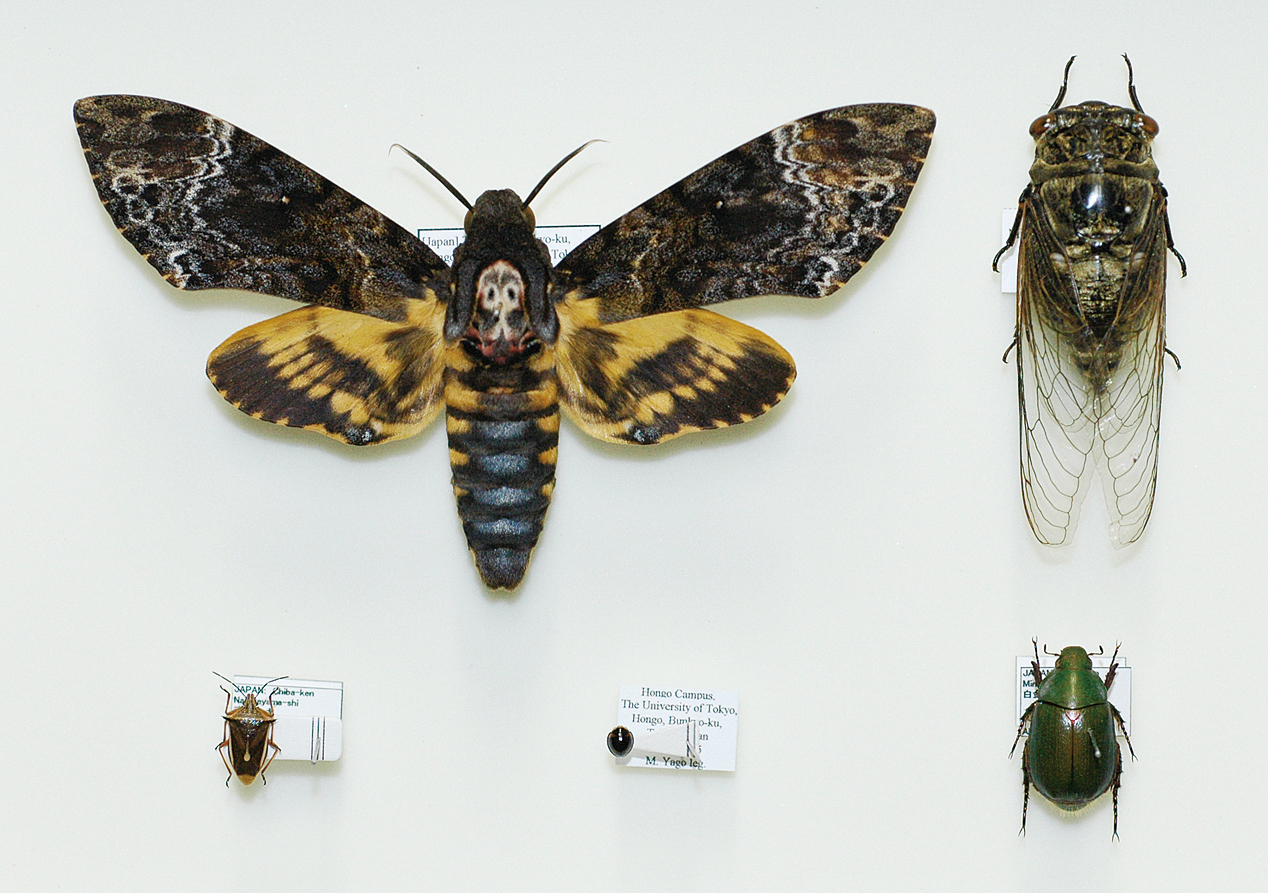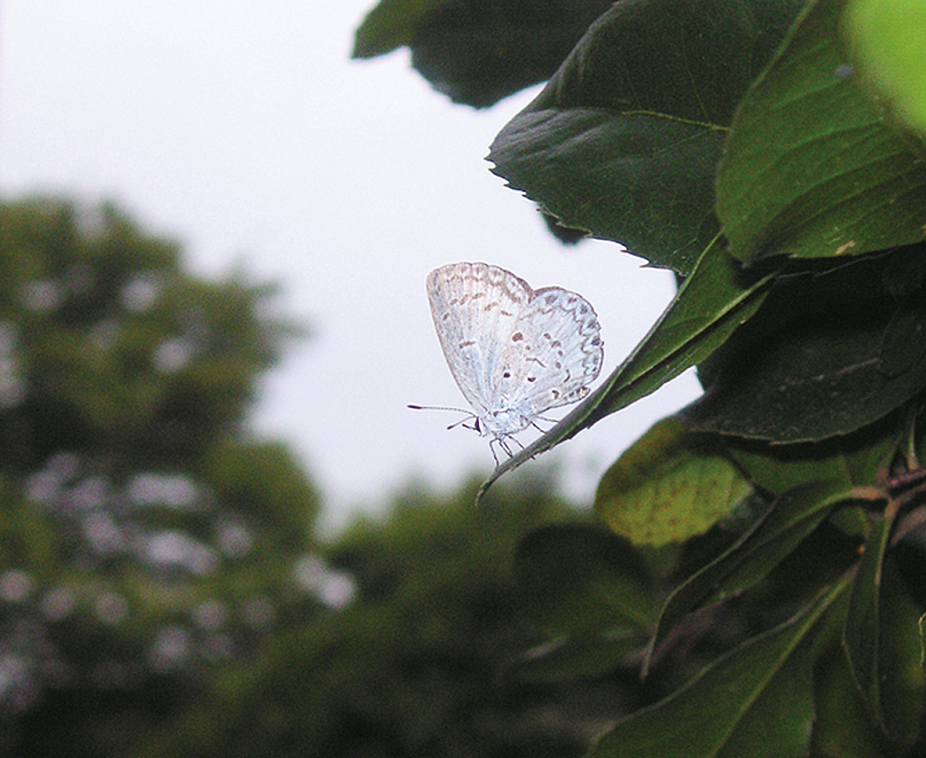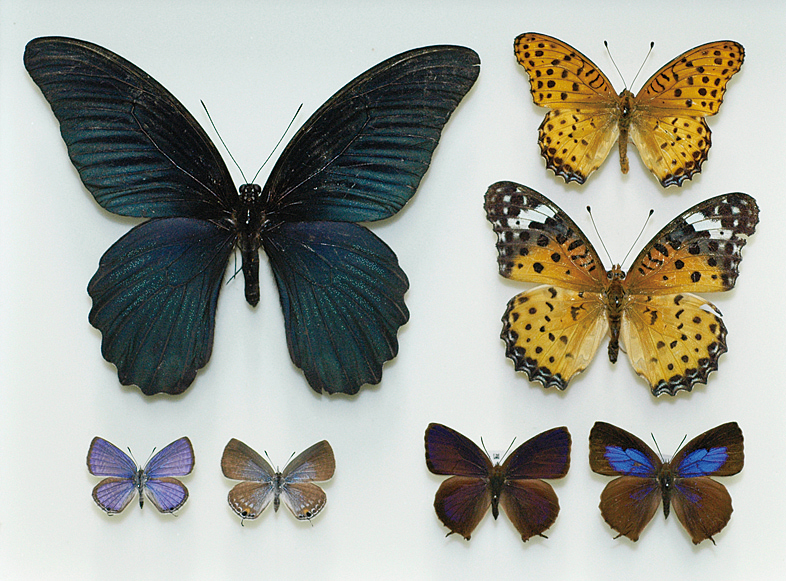C6
The effects of global warming and anthropogenic disturbances on insects
Many tropical and subtropical insects have been expanding their distribution ranges due to global warming and transplantation of their hostplants in recent decades, and the northern limit of the distributions have reached or gone beyond Tokyo. In this permanent exhibition, the following representatives are shown: Papilio memnon, Arhopala bazalus, Chilades pandava, Acytolepis puspa, Argyreus hyperbius (butterflies), Acherontia lachesis (moth), Anomala albopilosa, Cheilomenes sexmaculatus (beetles), Cryptotympana facialis (cicada) and Andrallus spinidens (stinkbug). These insects have been recorded at the University of Tokyo and/or its surroundings.
Of them, Acytolepis puspa were discovered in the summer of 2008 at the Hongo Campus, the University of Tokyo, which is located far away from its northeastern distribution limit; the west area of the Tokai district. Yago et al. (2009) investigated the dispersal pathway based on the adult morphology, the genetic variation and all possible hostplants in the university. In conclusion, A. puspa has gradually spread its distribution north due to global warming, and its northern limit in Mie Pref. may even have reached Suzuka City although this is as yet unconfirmed. This city is known as the biggest plantation area of its hostplants, Rhododendron plants. Thus, it appears likely that eggs or larvae of the species could have been introduced from Suzuka to Tokyo, accompanying transplantation of the hostplants. (Masaya Yago)
References
蓑原 茂・矢後勝也・田中和夫・森地重博・平井規央 (2013) 「関東地方におけるクロマダラソテツシジミの一時発生と分布拡大について」Butterflies (Teinopalpus) (62): 40–56。
Yago, M. et al. (2009) A discovery of Acytolepis puspa (Lepidoptera, Lycaenidae) in the Kanto district, Japan: a geographic range extension, dispersal pathway inferred from ecology, morphology and molecular analyses. Transactions of the Lepidopterological Society of Japan 60(1): 9-24.



